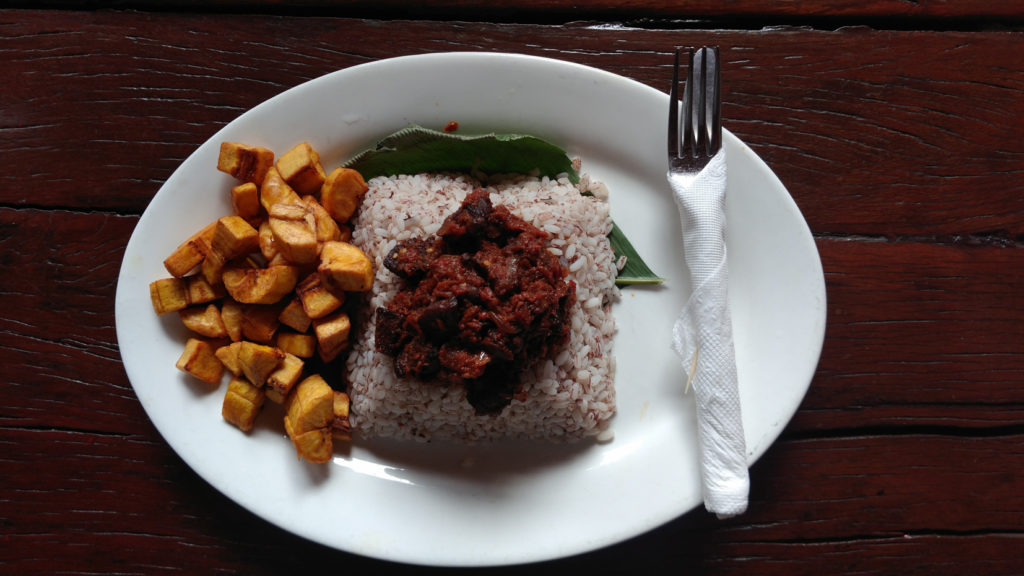Howard M-B Maximus reviews ofada rice and wonders why one finds jollof rice everywhere in Nigerian literature, but hardly any reference to ofada rice.
With a rice dish as unique as ofada rice, it is worrying that Nigerian jollof is the most regarded rice dish from Nigeria. This is like a parent showing off their less-skilful child in a talent contest, leaving the more talented sibling to watch from the audience.
My first ofada rice experience is at Terra Kulture ─a cultural centre in Victoria Island, Lagos─ a magnet that pulls ardent art lovers into its body. It carries a gallery, which exhibits paintings and photographs, and a bookstore where bookworms go to indulge as they wait for their food. Or perhaps the restaurant is the addition, so that art lovers ploughing the place would not die of starvation, experiencing art and culture in food.
Nothing good comes early. The dish takes its time to be put together. Small calabashes of chin-chin and peanuts are served as appetisers.
My ofada rice finally comes. On a leaf. Carried by a waitress eager to please. She is surprised when I say I’m from Cameroon and this is my first attempt at the dish. When the table is set, she does not leave immediately. She stands there deferentially, waiting to inform. She tells me the ofada rice is a locally grown variety of rice. It is grown in Ogun State, South West Nigeria, and named after Ofada, a town in that state.
The grains are like no other I’ve seen before. Unlike the long-grain Uncle Ben’s rice, they are short and fat, looking like obesity in little things. Brown stripes run along their aromatic bodies, as if their owners had marked them to guard against prospective fat-rice thieves. They are packed in a mount on top of the uma leaf (the same leaf used in the preparation of moin moin – another Nigerian delicacy), and topped with a dark-red sauce, and tiny dices of spiced beef. Ripe, fried plantain accompanies it, and, if you are wise, you will keep a chilled bottle of water or drink handy.
Related: Almighty Nigerian Jollof
When you taste ofada rice, the first thing that hits you is the pepper; hot and biting. It will erupt fountains of saliva from beneath your tongue long after you have swallowed. This hit is deliberate. Intended. It is said that (don’t quote me), if you taste ofada rice and the pepper does not hit you, hit the table and leave. This is what the chilled drink/water is for. Once the bite of the pepper has spread throughout the mouth, you start getting undertones of the other spices; they gather together like choristers on your tongue, to form a choir of culinary sensations.
After reading the review of Terra Kulture from the likes of Seun Kuti, Sefi Atta, Kolade Ashinowo, and Chimamanda Ngozi, one cannot help but wonder if it is ofada rice that these great minds had ordered in this place. But what I wonder more about is why one finds jollof rice everywhere in Nigerian literature (Without a Silver Spoon by Eddie Iroh; Half of a Yellow Sun, Americanah, and Purple Hibiscus by Chimamanda Ngozi; On Black Sisters Street by Chika Unigwe, and so on) but hardly any reference to ofada rice.
It is unfathomable why any mother would send forth their less-skilful, adopted Jollof child into a contest while the more able Ofada child, strong in originality, size, and taste, is left to sit in the background, watching as their mother tries to bully its sibling’s way to a win.
